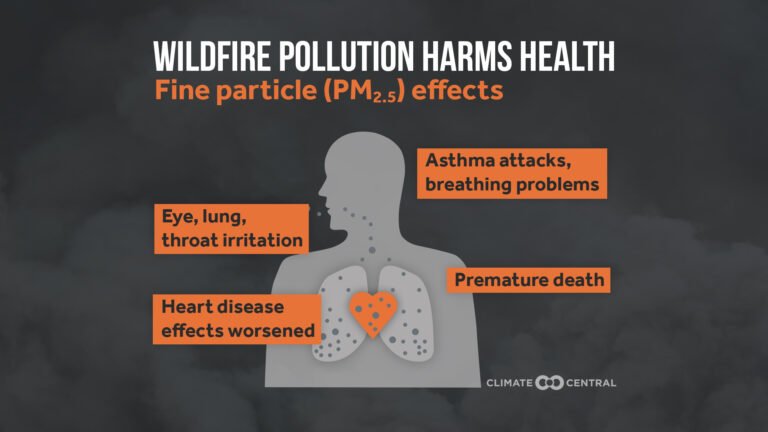How to Keep Your Lungs Healthy When the Air Isn’t
Poor air quality is caused by a mix of hazardous particles from human-made sources, like vehicle emissions and byproducts of manufacturing and power generation, as well as from natural sources, like smoke from wildfires. Hot summer temperatures can compound the problem, as heat and stagnant air can lead to a buildup of ground-level ozone pollution.
Not only can air pollution make breathing difficult for all of us — and especially for kids, older adults, pregnant women, people with diabetes, and people with asthma or other pre-existing respiratory conditions — but it can also lead to and/or exacerbate numerous chronic health conditions. Adults who actively play or work outdoors are also considered at higher risk because of prolonged exposure to poor-quality air.
Learn more at AirNow.gov
Regardless of your lifestyle or overall health, it’s important to protect yourself from the dangers of air pollution. Keep reading to learn how.
Risks and Recommendations
It doesn’t take long for poor air quality to negatively affect the quality of your health. Not only can short-term exposure to pollution like wildfire smoke cause near-immediate irritation to your eyes, nose, throat, and lungs — as well as increase the risk of respiratory infection — but studies have shown that even short-term exposure to small particulate matter increases the risk of a range of cardiovascular and respiratory diseases.
Longer-term exposure to air pollution is associated with several chronic health conditions, including:
Severe asthma
Low birth weight, preterm birth, miscarriage, or stillbirth
Heart disease
Stroke
Lung cancer
Dementia
Lower IQ in children
Gestational diabetes
Whether you are part of an at-risk group or not, it is important to take extra steps to protect yourself from harm.
Consider the following tips:
Check the Air Quality Index (AQI) in your area. The daily, color-coded forecasts can let you know if the air in your area is unhealthy. An AQI under 50 is considered good air quality, while an AQI over 300 is considered hazardous. You can get your local AQI from your local media outlets or online at airnow.gov.
Avoid exercising outdoors or doing other outdoor activities when pollution levels are high. According to the EPA, the chances of being affected by unhealthy levels of air pollution increase the longer you are active outdoors and the more strenuous the activity. When the air quality is bad, walk indoors in a shopping mall, exercise in a gym, or work out at home.
If you must spend time outdoors during high-AQI days, consider wearing a well-fitted N95 or KN95 mask. These masks have better filtration capabilities and that can be especially helpful for keeping dangerous particles out of your lungs.
Be sure to keep your indoor air healthy by keeping the windows and doors closed. You should also run your air conditioning on the recirculate setting. You might also want to consider using a portable HEPA air cleaner.
Avoid exercising near high-traffic areas — no matter the air quality. Even when AQI numbers are low, vehicles on busy roads can create high pollution levels up to one-third of a mile away from you.
Contact your healthcare provider if you are currently suffering from symptoms such as coughing, sneezing, itchy or watery eyes, runny nose, sore throat, headaches, extreme fatigue, shortness of breath or difficulty breathing, as your symptoms may signal a more serious problem.
Sources: American Lung Association, National Institutes of Health, AirNow.gov
We are here to Help You Breathe Better Again – The Lung Docs



